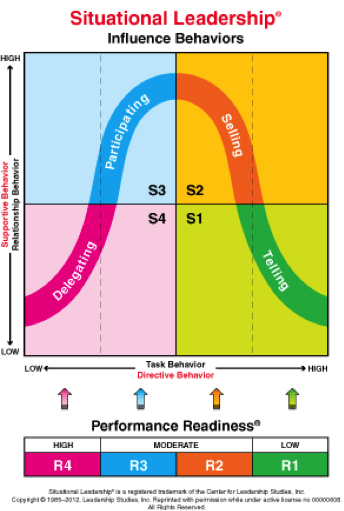LEAD
Contact UsThe Situational Leadership® Model is arguably the most recognized, utilized and effective leadership and influence tool in the history of the behavioral sciences. It is a powerful, yet flexible tool that enables leaders of all kinds to more effectively influence others.
The original Situational Leadership® Model is based on the relationship between leaders and followers and serves as a framework to analyze each situation centered on:
Situational Leadership® stresses flexibility and simplicity in execution. It can equip leaders with the tools necessary to skilfully navigate the demands of an increasingly diverse workforce and evolving global marketplace. Infinitely adaptable to any circumstance, the model prepares leaders to address the most pressing challenges pervasive in today’s work
The Benefits of Situational Leadership®
The Situational Leadership® Model utilizes a repeatable process that leaders can leverage to effectively influence the behavior of others. Its creator, Dr. Paul Hersey, often described it as “organized common sense.” At its core, Situational Leadership® provides leaders with an understanding of the relationship between an effective style of leadership and the level of readiness that followers exhibit for a specific task.
Also, with application across organizational leaders, first-line managers, individual contributors and even teams, Situational Leadership® utilizes task specificity to serve as a mechanism through which leaders maximize their influence-related impact.

Situational Leaders:
- Maintain an acute awareness of their innate leadership-related strengths and areas for development – critical skill sets in working in high-performing organizations
- Conduct highly effective coaching conversations by understanding when a particular leadership style has a high probability of success and when it does not
- Skilfully influence up, down and across the organization by knowing when to be “consistent” and when to be “flexible”
- Create more productive teams/organizations by accelerating the development of individuals that are new to their role and/or are learning a new task
- Develop engaged, committed employees by effectively recognizing and proactively addressing the dynamics of performance regression
- Effectively drive behavior change and business results by communicating through a common, practical language of leadership
